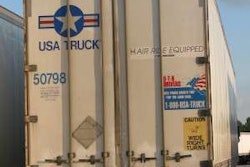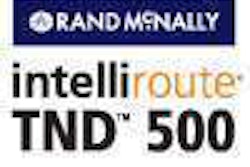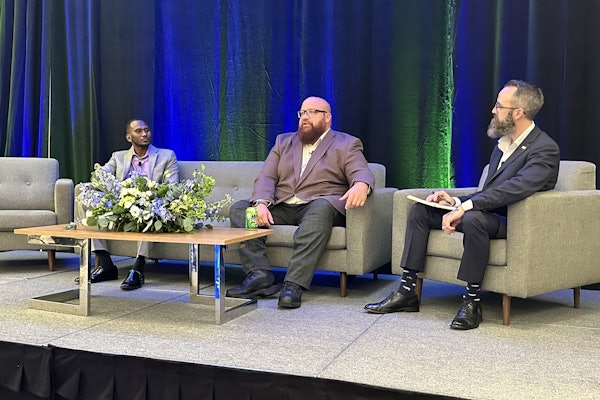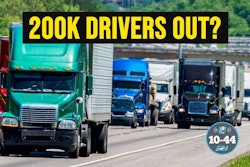 Until revenues rebound, carriers are doing whatever it takes to lower costs, especially the most volatile cost of all — fuel.
Until revenues rebound, carriers are doing whatever it takes to lower costs, especially the most volatile cost of all — fuel.
White Oak Transportation and Logistics, a Decatur, Ala.-based truckload carrier, uses a program from Simons Petroleum called the Shipper Solution to flat-line its fuel costs. White Oak signs term agreements with Simons to buy a certain number of gallons. This fuel “hedge” is purchased on credit. As the gallons are pumped from Simons’ Pathway fuel network partners, the pump price is reconciled against the hedge and settled based on the term agreement.
This program enables White Oak to bill its customers a flat per-mile rate for the gallons it consumes. For shippers, the benefit is to eliminate the variable fuel surcharge on orders it quotes today that deliver days, weeks and months later. Shippers can keep their profit margins intact should fuel prices rise before their orders ship.
“As a carrier, we are buying (fuel) at a fixed cost and selling it at fixed cost,” says Ryan Waller, White Oak’s vice president of operations.
While it may be impossible to completely flat-line your fuel and other operating costs, technology and fuel management programs at least make it possible to implement tighter cost controls and use information to maximize your savings.
Hedging your bets
The simplest form of managing fuel price risks involves collective purchasing, such as through a group fuel program or a buying cooperative. Several companies, including most vendors that supply fuel cards and fleet payment systems, offer a discount fuel network.
These vendors also offer information to help fleets make daily fuel-buying decisions. Wright Express customers have access to tools such as Fuel Price Mapping and Daily Best Fuel Price, says Bernie Kavanagh, vice president of corporate payment solutions, East.
Hedging is a more complex strategy for minimizing risk. For some fleets, hedging means investing in financial instruments to effectively “reimburse” the company as fuel costs rise. White Oak uses a much simpler and predictable hedging strategy based on actual fuel usage.
For White Oak, the Shipper Solution program is tailored to specific traffic lanes for customers that use its dedicated contract carriage. As with most dedicated carriers, White Oak prices its service based on round-trip miles. Waller uses historical data to determine the total number of miles — and hence, gallons — a customer’s shipments will generate in a certain period and the amount of gallons to hedge.
Typically, the shippers that participate in this fuel arrangement want to renegotiate their fuel charge on a quarterly basis, Waller says.
From a customer service standpoint, the biggest challenge of hedging fuel comes during a downside fuel market, Waller says. In this instance, customers may need to be reminded that the agreement will protect their sales profits on all orders quoted for delivery in the future.
“People in accounting tend to get too focused on (fuel prices) from a day-to-day standpoint,” he says.
White Oak buys fuel on a daily basis through Simons’ Pathway Network, which consists of Loves truckstops and a few independent stations. Simons Petroleum physically delivers fuel to locations in the Pathway Network on behalf of its customers.
“These are physical delivery hedges versus a financial derivative,” says Brad Simons, president of the Pathway Network and senior vice president of Simons Petroleum.
The Shipper Solution works best for dedicated carriage where carriers can transfer fuel costs directly to the shipper for all miles. In other situations where a carrier’s fuel surcharge covers only loaded miles, Simons recommends that carriers hedge the gallons they cannot bill with a fuel surcharge, such as gallons associated with out-of-route miles, idling, deadhead and brokered loads.
Another way to reduce the impact of volatile fuel prices is to use a fuel surcharge that ties more directly to actual fuel costs rather than a weekly average. FuelSurchargeIndex.org offers such a service that uses actual pump prices from more than 5,000 truckstops to calculate the average daily fuel price for a point-to-point route. Several companies are involved in the FuelSurchargeIndex.org venture, including Randall-Reilly, which owns CCJ.
Managing fuel costs
Whether or not carriers participate in hedging programs, buying fuel at the lowest possible cost on a daily basis requires both technology and strategic planning. Because many companies have had to trim administrative costs, fewer have the resources to implement fuel-buying strategies.
Companies such as Comdata, Fleet One, Wright Express and T-Chek that provide fuel card and electronic payment systems offer professional fuel management services to help customers design fuel networks to maximize savings. The companies say their services are comparable to having a fuel manager on staff without the overhead.
Telapoint, a wholly owned subsidiary of Wright Express, provides comprehensive fuel supply chain solutions and powers the Wright Express Fuel Advisors, a fully outsourced fuel desk program. Wright Express also offers hedging solutions through partners such as Pricelock, Kavanagh says.
Many fleets use software to automate daily fuel buying decisions and maximize savings. These fuel optimization systems can translate fuel discounts, fuel networks and other money-saving strategies already in place into actual purchases at the pump. But a fuel optimizer only can make recommendations from what it knows.
“If you are truly going to manage fuel, you can’t just use one thing,” says Deanne Smith, director of fuel management for Fleet One. “You must combine the best of software, knowledge of operational needs and the right personnel. Just because a merchant offers the lowest price of fuel does not mean they are the most overall cost-effective location for a fleet.”
Safety is another consideration. If a driver has to make a left-hand turn through oncoming traffic to enter a fuel location, the fuel optimizer will not consider the added risk. “Your operations team should,” Smith says. “They can then remove that location as an option in your software.”
In addition to helping fleets design fuel networks that fit their needs, Fleet One provides custom reporting for executives, managers and drivers. A chief financial officer may want to see the company’s overall compliance to its fuel network and the cost of noncompliance, whereas an operations manager may want to view these measurements for individual drivers, Smith says.
Comdata recently released a Web-based business intelligence tool that offers dashboard-style reports. Executives can use the tool to summarize their daily fuel transactions in various ways, such as drivers’ compliance to the company’s fuel network. “It allows senior executives to get a quick snapshot,” says Greg Koren, senior vice president of fleet sales.
Efficient transactions
Fleet cards are standard tools for private and commercial fleets to control the location and dollar amount of fuel purchases. For maximum control, fleet card providers also offer real-time interfaces to major enterprise resource planning (ERP) software systems.
These interfaces let fleets establish fueling parameters based on categories such as truck and trailer number, trip number and odometer reading. The fleet cards prompt drivers to enter data at the pump, and the data is verified instantly with information in the ERP system before authorizing a transaction.
The need for electronic controls on purchasing extends beyond fuel. The same level of integration between fuel cards and ERP systems to control fuel purchases can exist for other purchases, from office and shop supplies to equipment maintenance.
Comdata offers a virtual MasterCard program whereby companies can quickly retrieve a card number that is authorized for a specific amount, by a specific vendor, for one-time use.
“A lot of people are using it for maintenance programs,” Koren says.
By integrating Comdata’s virtual MasterCard program with a fleet maintenance software system, a maintenance manager could approve an invoice from a vendor and issue a payment immediately by phone or e-mail, instead of having to generate a check or purchase order for each transaction.
Corcentric offers a fully electronic system for approving purchases and paying invoices. The online service is designed to translate paper or electronic invoices from suppliers into a single digital format that can be integrated with financial and accounting software systems.
Perkins Logistics, a Noblesville, Ind.-based truckload fleet with 350 owner-operators, recently implemented Corcentric’s system. Greg Maiers, president of Perkins, anticipates a big payoff in reducing in-house paperwork once the company finishes setting up its vendors to submit invoices electronically.
“Some (vendors) are pretty savvy, and some are mom-and-pops,” Maiers says. By dollar volume, Maiers estimates that about 70 percent of invoices now arrive automatically. The next phase is to implement workflow tools from Corcentric to streamline the approval and payment process, he says.
Programs and technology that give fleets more visibility and control of their costs and purchasing activities will continue to pay dividends long after revenues rebound.














